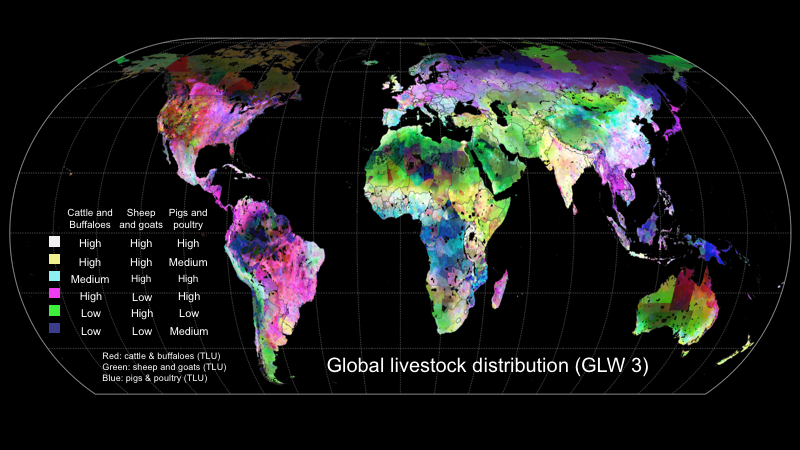New publication on the global distribution of livestock
Published on October 28, 2018, by Marius Gilbert

In collaboration with the Food and Agriculture Organization of the UN (FAO) and other collaborators, we are publishing this week in Nature Scientific Data the result of several years of research to improve global data on the distribution of livestock (cattle, buffaloes, horses, sheep, goats, pigs, chickens and ducks).
These new data sets provide estimates of the density (individuals / km2) of these species at a spatial resolution of 5 minutes of arc (approximately 10 km at the equator) over the globe. These new data sets benefit from the implementation of new machine-learning algorithms allowing to downscale coarse census data at finer levels, and to provide estimates in areas without census data.
In high-income countries, the livestock sector is subject to debates around meat consumption involving questions of individual ethic, animal welfare and environmental impact, which are largely fed by the excesses of industrial livestock production. These debates should not obscure the fact that in lower income countries, livestock is an essential source of protein, micronutrients and income where the sector contributes to the nutrition and livelihood of over 800 million smallholders.
These new data sets will allow better estimates of the multiple benefits and detrimental impact of the global livestock sector and help transitioning livestock production systems toward sustainable modes of production.
Reference:
Gilbert M, G Nicolas, G Cinardi, S Vanwambeke, TP Van Boeckel, GRW Wint, TP Robinson (2018) Global Distribution Data
for Cattle, Buffaloes, Horses, Sheep, Goats, Pigs, Chickens and Ducks in 2010.
Nature Scientific data 5: 180227 Doi:10.1038/sdata.2018.227
Link to the new data layers on the harvard dataverse:
https://dataverse.harvard.edu/dataverse/glw_3